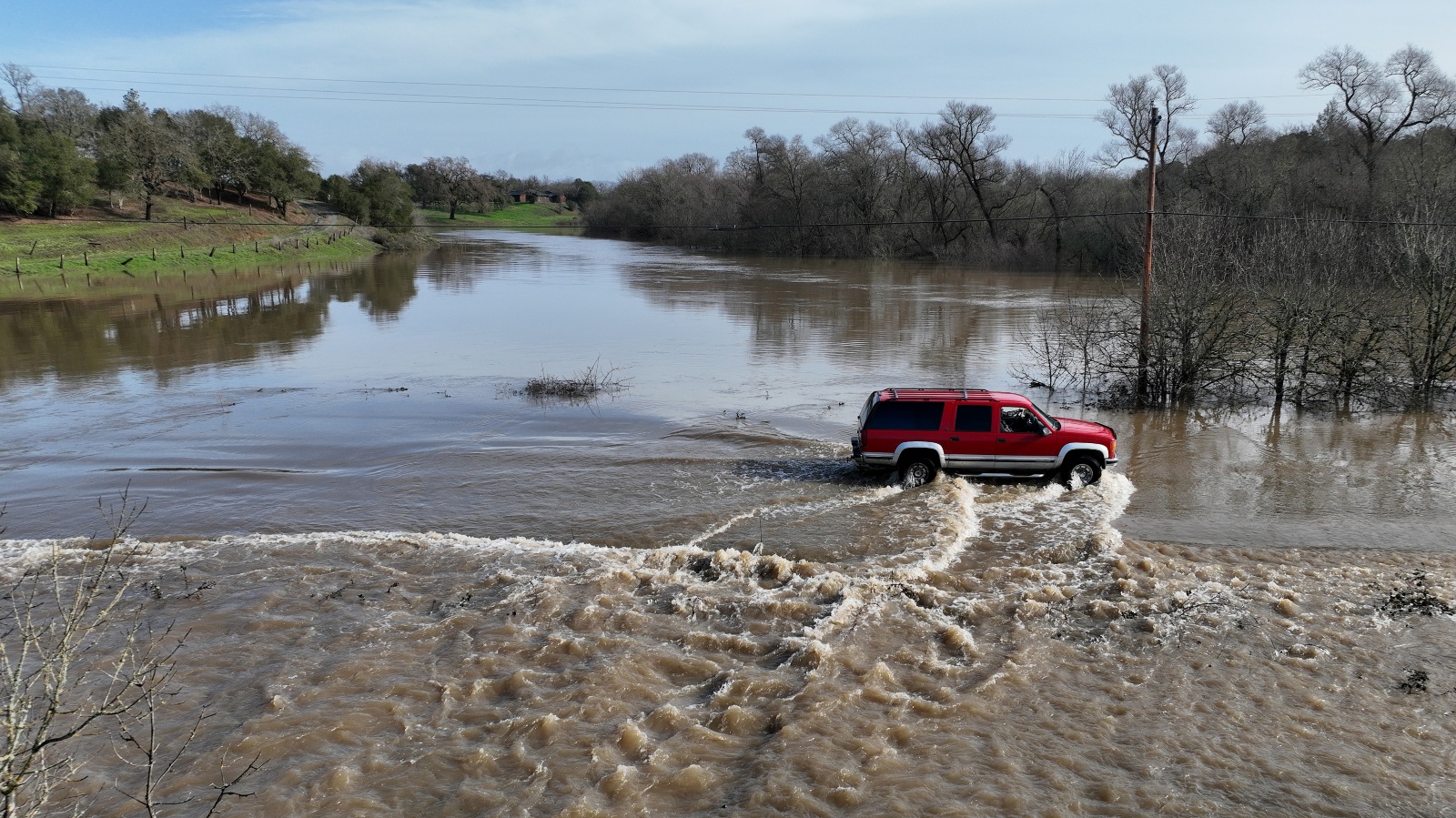The bipartisan infrastructure legislation that President Joe Biden signed in 2021 allocated more than $50 billion to make America’s roads, bridges, power lines, and other infrastructure more resilient to climate change. But much of that money comes with a catch. According to a new analysis, 60 percent of the law’s funding for projects that are designed to help communities prepare for climate disasters requires communities to pony up between 20 and 30 percent of the cost of a given project. This is known as a “local match,” a certain amount of money that a grantee is required to contribute to the overall costs of a project in order to qualify for a federal grant.
The analysis — by Headwaters Economics, an independent research group that focuses on community development and land management — warns that local match requirements are putting rural communities in particular at a disadvantage. Many lack the resources to both apply for grant projects and also to sustain their portion of funding through the lifetime of a project.
Yet many of these rural communities are on the front line of climate change.
“They’re experiencing floods, they’re experiencing fires, and we see these events getting more and more extreme,” said Kristin Smith, a researcher at Headwaters Economics and the author of the analysis. “These are also the places that tend to have really small local governments.” Such communities are in a poor position to get the money together to invest in the projects they need to keep them safe.
Local match requirements for federal resilience grants usually manifest as a fixed percentage of a project’s cost, without considering the size or wealth of a community. But critical climate resilience infrastructure projects are often more expensive in rural places than urban ones, since rural communities need larger-scale projects to cover a greater geographic area. With a smaller tax base to help cover the costs of these fixed-priced projects, rural governments find it difficult to secure the finances to cover grant requirements.
A relatively new federal program called Building Resilient Infrastructure and Communities (BRIC) program, was launched in 2021 to support climate resilience projects that protect vulnerable communities from natural disasters. The bipartisan infrastructure law is providing $1 billion over five years for the program. At its conception, BRIC was touted by the Federal Emergency Management Agency as a more equity-focused program that would better assist disadvantaged communities. But an analysis of BRIC’s first year found that the projects that the program had selected for funding were heavily concentrated in wealthier, coastal regions of the country — in part, Headwater Economics argues, because of the local match requirement. BRIC prioritized applications from communities that could pay a higher match. “The intent was to incentivize local investments, but in practice the scoring rubric made it more difficult for smaller communities to compete,” Smith’s analysis found.
Match requirements are just one factor that prevent rural and under-resourced communities from getting the climate resilience grants they need. A lack of expertise and access to professional grant writers can also contribute to rural communities’ failure to compete successfully for resilience grants against larger and better-resourced communities. These barriers have eroded rural trust in federal institutions.
Some rural communities have opted out of the process of applying for grants altogether. But Smith sees hope in a new federal program that will provide direct technical assistance to local communities that need help with grant writing and project identification and design, as well as simply navigating the federal system.
In the long term, Smith and her fellow researchers at Headwaters Economics have proposed bigger-picture solutions to the local match requirement. One proposal is to allow a wider variety of expenses, such as long-term maintenance costs, to count towards a local match, which would acknowledge that communities are already invested in the overall success of the project even if they lack the finances to pay upfront costs.
A second option would be for states to create specific funds to help local governments meet local match requirements. A number of states have already done so: Colorado has allocated $80 million of its general budget to help counties, municipalities, and federally recognized tribes pay for local matches. Texas has also created a fund specifically to provide matches for community flood projects.
Finally, getting rid of the local match requirement altogether may just be the most equitable solution. The local match “is something that is preventing rural communities from applying for federal funding,” said Smith. With an elimination of the local match requirement, as well as stratifying grant funds so that poor rural communities aren’t competing directly against larger, wealthier communities, Smith argues, “you’re making big strides to having a more equitable distribution.”




